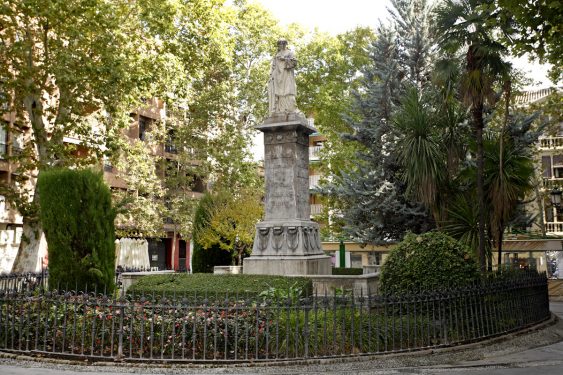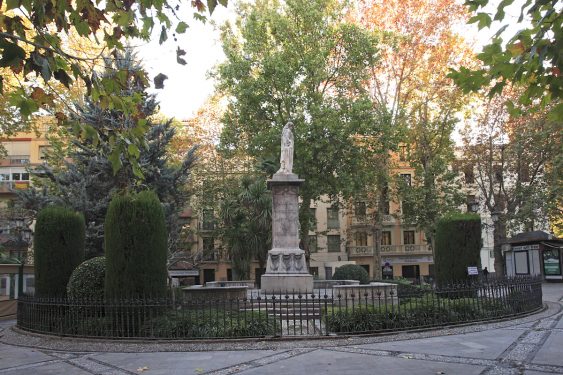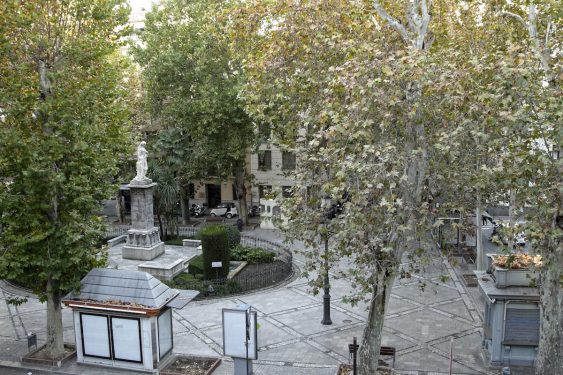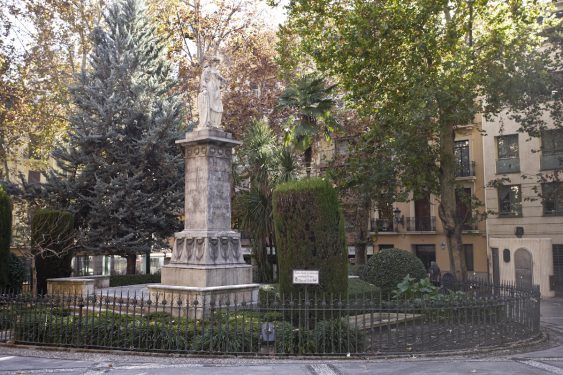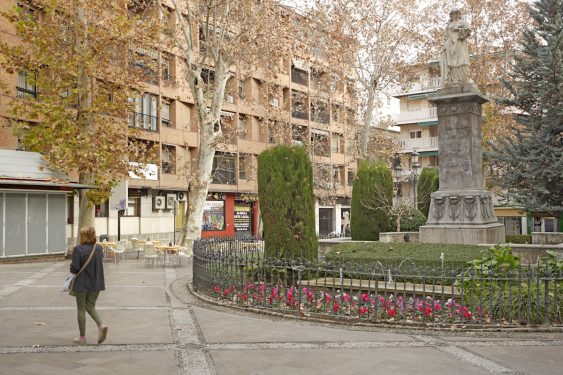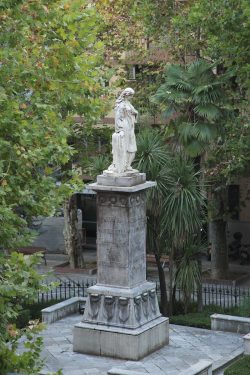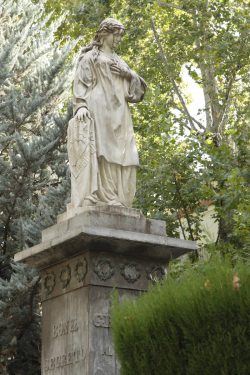The real scenarios of Mariana Pineda, one of the representative pieces of Lorca’s theater, can be followed as an itinerary of the heroine of freedom.
Mariana Pineda Square (emblematic heroine of the liberal and romantic Granada) is the central location of the tragic history of this native of Granada.
It was located a few steps from the Lorca family home in the Acera del Casino. In fact the poet used to witness the daily comings and goings of the square from his room. Mora Guarnido describes the place as “A common square, the most commonplace of the small squares in Granada without perspective and without grace and in the center a bad marble statue that pretends to represent the poor Marianita in the figure of a fat Roman matron”.
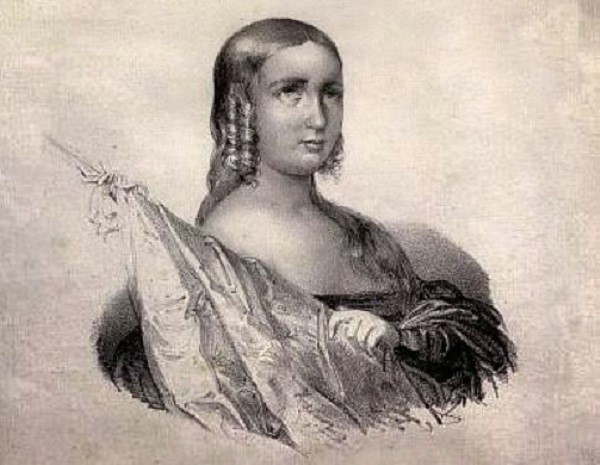
The construction of the esplanade was approved by the Cortes in 1836 (during the Regency of María Cristina). The execution was however slow. The first stone was laid in 1839, although the inauguration was delayed until 1873. The authors of the sculpture were Miguel Marín and Francisco Morales. The full-length figure represents a Mariana dressed in a tunic, her hair loose and her right hand resting on a column covered by a flag, in whose folds one can read “Homeland / Law / Liberty”. Her left hand is placed under a cross hanging from her neck towards her chest. Mariana directs her gaze with a look of dismay towards the site of the no-longer existing Cervantes Theater. Later, the work was protected with an iron fence, a small garden and nowadays also a fountain.
Mariana Pineda was born in a small palace located in the Carrera del Darro street, today transformed into a hotel. The building preserves a magnificent central courtyard containing a pillar with an original coat of arms from the time of its construction in the sixteenth century. The lower part is attributed to Diego de Siloé.
The Mariana Pineda square, with a statue to the heroine, which Federico constantly saw from one of the windows of the family home at Acera del Casino 31 (now number 15). The square is located beside the old El Rinconcillo meeting place (in the Alameda cafe, now Chikito Restaurant, in Campillo square) and next to the Cervantes theater (also Campillo square and Mariana Pineda square), which disappeared.
In the Plaza de la Libertad (Liberty Square) (inaugurated in 1988), in front of the Triunfo gardens, there is a reminder of the place where the heroine was executed. On the four sides of the base of an iron cross there is an inscription from the 19th century: “On May 25, 1831, young Mariana Pineda was sacrificed in this place destined to death for crimes committed, because she longed for the freedom of the homeland. In 1840, The Constitutional City Council and Territorial Court ordered that in memory of such an illustrious victim, the sacred sign of our Holy Religion be placed there and that no more executions of justice be carried out at that place”.
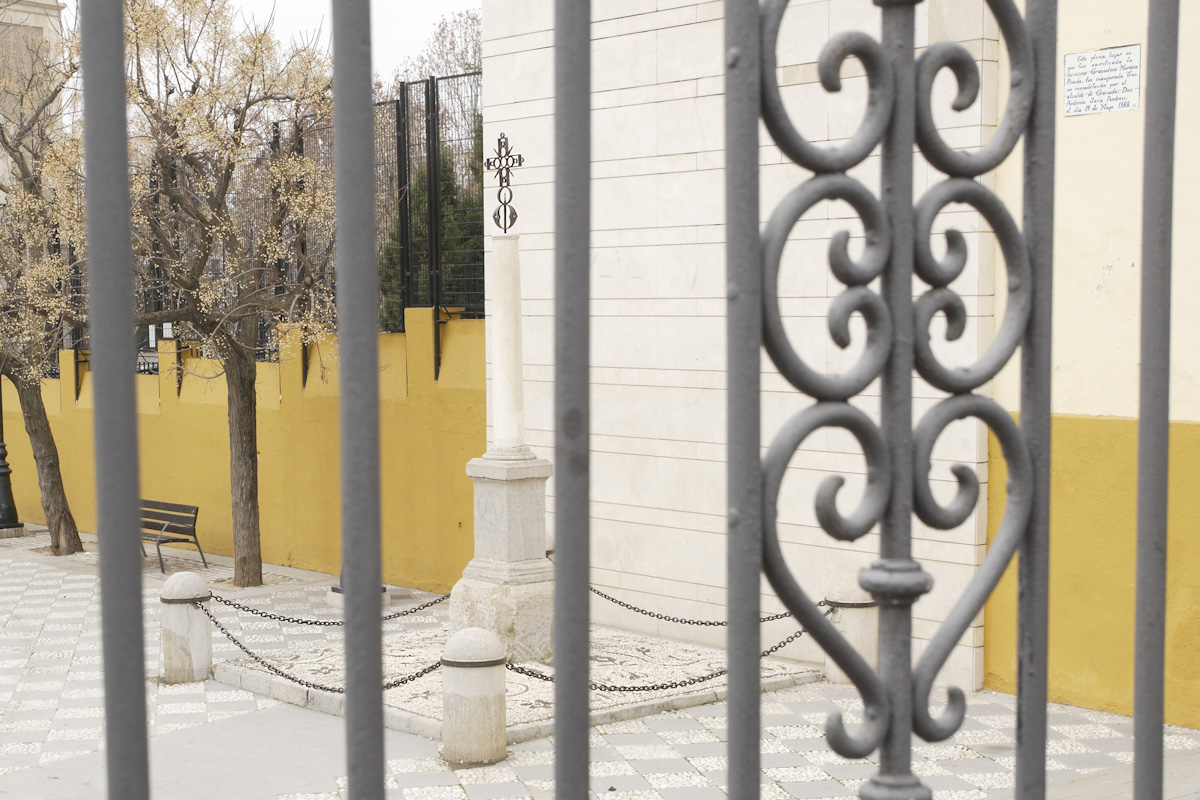
The building where Mariana Pineda lived on the day of her arrest is a 17th century courtyard house located at 19 Águilas Street, consisting of a first floor and two upper floors. Since 2003, it has been the headquarters of the European Center for Women’s Studies. She was imprisoned there in 1831 for embroidering a flag that represented the constitutionalist aspirations of many liberals. After her arrest she was taken to the convent of the Arrecogías del Beaterio de Santa María Egipciaca (on Recogidas Street, next to the church of San Antón) where she remained until she was taken to the prison, on Cárcel Baja Street, and from there to the guillotine where she was executed on May 26, 1831.
“Mariana Pineda was one of the greatest emotions of my childhood. The children of my age, and I myself, holding hands in a circle that opened and closed rhythmically, sang with a melancholy tone, which seemed tragic to me; ’¡Oh! Qué día más triste en Granada,[Oh! What a sad day in Granada], / que a las piedras hacía llorar [that made the stones cry] / al ver que Marianita se muere [to see that Marianita is assainated] / en cadalso por no declarar [by guillotine for not declaring’ (…). Marianita, the flag, the flag of freedom, Pedrosa, acquired for me fabulous and immaterial contours of things that resembled a nine, a downpour, a white fog in flakes, which came to us from Sierra Nevada and enveloped the small town in a whiteness and a silence of cotton. One day I arrived, hand in hand with my mother, in Granada: the popular romance rose before me again, sung also by children who had the deepest and most solemn voices, even more dramatic than those that filled the streets of my small town, and with an anguished heart I inquired, I asked, I saw many things, and I came to the conclusion that Mariana Pineda was a woman, a marvellous woman, and the reason for her existence, her main driving force, the love of freedom”.
“Materializing that ideal figure, the Alhambra seemed to me like a moon that adorned the heroine’s chest: the skirt of her dress, the valley embroidered among the thousand shades of green, and the white water, that snow of the mountains, jagged on the blue sky, a lace worked under the golden flame of a coppery candle”.
(Lorca's new work. Interview published in the newspaper 'La Nación' of Buenos Aires., December 1933)- Ian Gibson. Federico García Lorca. Biography. Grijalbo. Barcelona, 1985.
- Rafael Inglada and Víctor Fernández. Word of Lorca. Full Statements and Interviews. Malpaso, 2017.
- José Mora Guarnido. Federico García Lorca and his World. Losada, Buenos Aires, 1958.
- Antonina Rodrigo. Memory of Granada. FGL Birthplace Museum in Fuente Vaqueros, 1984.
- A. Rodrigo. Mariana Pineda. Heroine of Freedom. Compañía Literaria. Madrid, 1997.
- Lorca´s location
- Mariana Pineda Square
- current location
- Mariana Pineda Square
- ADDRESS
- Plaza de Mariana Pineda
- DETAILS OF THE VISIT
Public space with free access.
